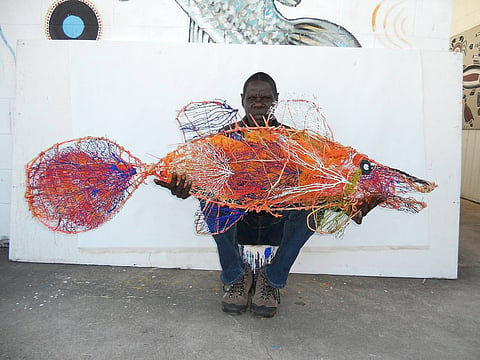

Australia has more than 250 different aboriginal tribes with distinct languages and cultures who consider land and animals sacred providing them with food options and culturally significant rituals. The ways in which they represent their culture, traditions, and values are through their art (paintings, sculptures, ceramics, wood carvings, and more). The Pormpuraaw community has added a new method of representing their totems and culture, namely, by recycling plastic into sculptural works. Through the project, the Pormpuraaw community takes up recycling, creates sculptural works, and shows the world the many impacts of plastic waste in oceans.
Pormpuraaw County's coasts have been severely impacted by marine pollution. Birds, dugongs (an endangered species), and sea turtles are frequently seen wrapped in ghost nets. Ghost nets, or plastic fishing nets thrown in the sea by commercial fishermen, are responsible for the deaths of over 200 marine animals in Australia. However, rather than being burned or abandoned, the waste net is increasingly being salvaged and used for sculptural pieces by local artists.
Pormpuraaw's ghost net art form's contents and connections are like an encyclopaedia of local sea life. Crocodiles, fish, turtles, jellyfish, and sea birds all play important roles. Their work has a fun, even whimsical look to it recent pieces include a ghost net mermaid, an airplane, and a laughing green frog with a long red tongue. According to the art center's website, the painters enjoy creating enormous pieces because they make children laugh when they see them.
The aboriginal community of Pormpuraaw cleans the Gulf of Carpentaria and Torres Strait to protect their land through the Caring for Country and Ranger programmes. Instead of dumping the collected garbage in garbage compounds, indigenous artists recycle it and use it to create sculptural works, representing totems. As the artists are skilled in weaving, the art of weaving plastics sort of came naturally to them. Using ghost nets, and even copper wire, aluminium offcuts, steel bars, old rope, flotation devices, and worn-out drag and cast nets, the artists create marine animals, and plants, such as dugongs, crocodiles, sawfish, frogs, and corals.
Pormpuraaw Art and Culture Center Coordinator, Paul Jacubowski, said in an interview with The Australian Museum that ghost nets are a real mess like a big ball. It's got coral and fishing lures wrapped in it, and it can take days to pull apart with an angle grinder. Some other artists raise awareness by creating sawfish out of ghost nets because sawfish is a culturally significant fish traditionally eaten by people when in mourning for deceased close relatives.
As part of an acquisition programme funded through the Australian Museum Foundation, the Australian Museum acquired four pieces of Pormpuraaw ghost net sculpture for its Garrigarang Sea Country exhibition. Over the years, ghost net sculptures have gained the attention of conservationists and artists from around the world. In times of extreme climate change, native communities are the first to feel the threat, as they consider themselves closely linked to nature and its adversaries.
You can check out their work here.
